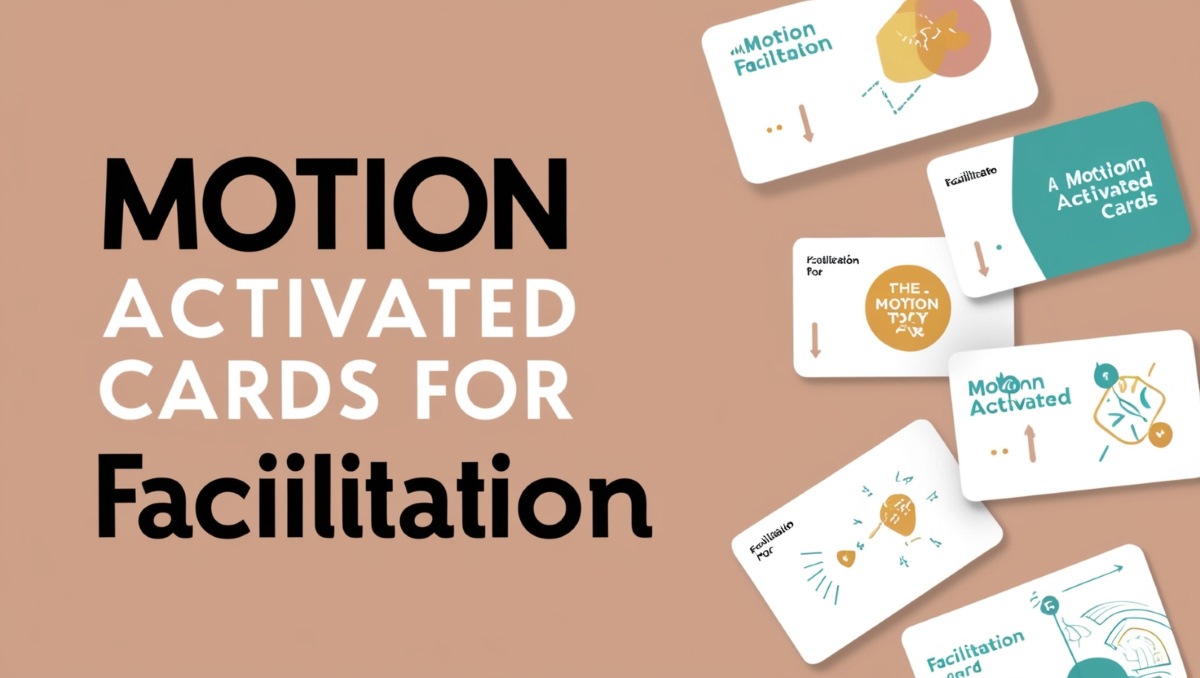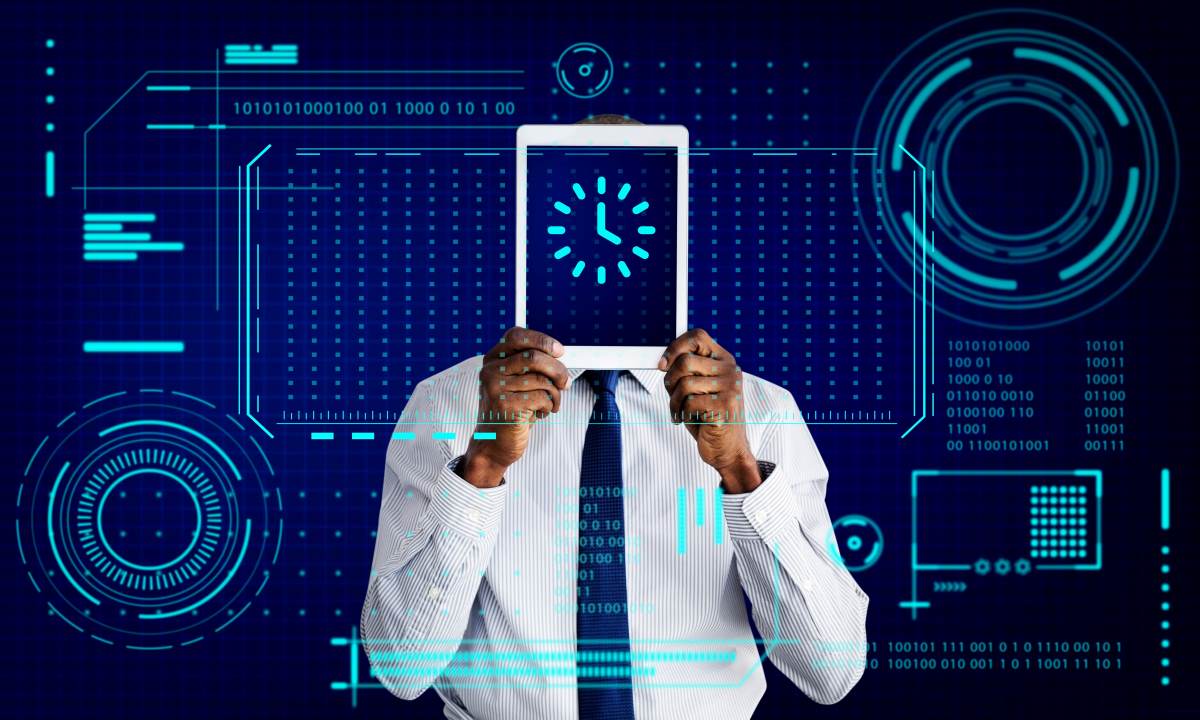Facilitation is an art, a delicate balance of guiding discussions while allowing creativity to flow. In group settings, the dynamics can shift dramatically based on how we interact and communicate. As facilitators, we constantly seek new ways to enhance engagement and foster collaboration among participants.
Enter motion activated cards—a revolutionary tool poised to transform group interaction. These innovative cards respond to movement, adding a layer of interactivity that captivates attention and encourages participation. Imagine a room where ideas spark instantly, fueled by the energy of physical engagement.
As we dive deeper into this topic, we’ll explore how motion activated cards for facilitation are not just tools; they are game-changers in creating vibrant and effective collaborative spaces. Join us on this journey as we uncover their potential impact on the future of facilitation!
The Evolution of Facilitation Tools
Facilitation tools have come a long way from their humble beginnings. Once dominated by flip charts and sticky notes, the landscape has transformed dramatically. As technology evolved, so did the methods we use to engage groups.
The introduction of digital platforms revolutionized how facilitators interact with participants. Virtual conferencing software brought people together across distances, enabling collaboration in real time. This shift opened doors for innovation in facilitation techniques.
With advancements in interactive technologies, the focus shifted toward creating immersive experiences. Gamification elements began to emerge, making sessions more engaging and dynamic. Participants could now actively contribute rather than passively observe.
Today’s facilitators are exploring cutting-edge solutions like motion activated cards for facilitation. These tools offer unique ways to stimulate conversation and encourage movement within groups—taking engagement to new heights while fostering deeper connections among participants.
Motion Activated Cards: What are they and how do they work?
Motion activated cards are innovative tools designed to enhance group facilitation. These interactive cards respond to movement, bringing a dynamic element to discussions.
When participants engage with the cards, they trigger various responses or prompts. This action can lead to immediate feedback or initiate specific activities within a session.
Each card is embedded with sensors that detect motion. This technology allows for seamless interaction without the need for extensive setup or complicated instructions.
Facilitators can use these cards in numerous ways—from icebreakers and brainstorming sessions to structured decision-making processes. The adaptability makes them suitable for diverse group settings.
By incorporating motion activated cards into their toolkit, facilitators can foster an environment of active participation and collaboration. The physical engagement encourages creativity and deeper connections among group members.
The Benefits of Using Motion Activated Cards in Facilitation
Motion activated cards for facilitation offer a dynamic approach to group interactions. They stimulate engagement by allowing participants to physically interact with the content. This tactile experience can spark creativity and encourage more robust discussions.
These cards facilitate real-time feedback, making it easier for facilitators to gauge participant sentiment. As individuals respond through movement, facilitators can adapt their strategies on the fly.
Additionally, motion activated cards cater to various learning styles. Visual and kinesthetic learners benefit immensely from this hands-on method. It creates an inclusive environment where everyone feels valued and heard.
Moreover, they promote collaboration among team members. The shared activity of moving these cards fosters connection and teamwork, breaking down barriers that may exist in traditional settings.
By integrating technology into their processes, facilitators enhance not just participation but also the overall energy of sessions.
Case Studies: Real-life Examples of Motion Activated Cards in Action
One notable case study involved a corporate team-building workshop. Facilitators utilized motion activated cards to promote engagement among participants. As attendees moved and interacted with the cards, discussions flourished. The energy in the room shifted dramatically.
In another example, an educational setting showcased these cards during a brainstorming session. Students were encouraged to physically activate the cards as they shared ideas. This innovative approach transformed traditional group dynamics, leading to increased creativity and collaboration.
A nonprofit organization adopted motion activated cards for community outreach meetings. By mixing movement with dialogue, they found that quieter members felt empowered to contribute more actively. This shift not only improved participation but also fostered deeper connections among group members.
These real-life scenarios illustrate how motion activated cards can reshape facilitation methods, making interactions vibrant and dynamic across various contexts.
Potential Challenges and Limitations of Using Motion Activated Cards
While motion activated cards offer innovative ways to enhance group interaction, they come with challenges. One significant issue is the need for a reliable technology infrastructure. Without stable Wi-Fi or power sources, these tools may become ineffective.
Another concern involves user adaptability. Not everyone is comfortable with new tech, and some participants might struggle to engage fully during sessions. This can create barriers rather than foster collaboration.
Additionally, there’s the risk of overstimulation. With dynamic visuals and sounds, some individuals may find it distracting instead of beneficial. It’s crucial to strike a balance between engagement and focus.
Costs play a role in accessibility. Organizations on tight budgets might hesitate to invest in such advanced tools when traditional methods still exist. These factors must be carefully considered before integrating motion activated cards into facilitation practices.
The Future of Facilitation: Predictions and Possibilities with Motion Activated Cards
The landscape of facilitation is shifting rapidly. Motion activated cards are not just a passing trend; they represent a new frontier in group interaction.
Future applications could see these cards integrated into virtual and hybrid meetings. Imagine participants using motion to activate prompts that guide discussions, sparking creativity and collaboration like never before.
With advancements in technology, we may witness the emergence of smart cards. These would track engagement levels and adjust content dynamically based on real-time feedback from the group.
Facilitators might also leverage data analytics to gain insights from interactions with motion activated cards. This could enhance future sessions by tailoring experiences to meet specific group needs more effectively.
As organizations continue embracing innovation, the potential for enhanced teamwork through these interactive tools is immense. The next generation of facilitation will likely be more engaging, inclusive, and responsive thanks to this transformative approach.
Conclusion:
The integration of motion activated cards for facilitation represents a significant leap forward in how groups interact and engage. These innovative tools not only encourage participation but also foster a dynamic environment where ideas can flow freely. As we’ve explored, the benefits are manifold—enhanced engagement, real-time feedback, and increased inclusivity.
While challenges exist, such as ensuring all participants feel comfortable with technology or managing distractions, these hurdles can be overcome with thoughtful planning and training. Case studies highlight successful implementations that have transformed group dynamics across various settings.
Looking ahead, the potential for motion activated cards to shape the future of facilitation is vast. They could revolutionize workshops and meetings by providing immediate visual cues that keep discussions lively and focused. With ongoing advancements in technology and understanding of group psychology, we may soon see even more sophisticated applications emerge.
As facilitators embrace this trend, they have an exciting opportunity to redefine collaboration in ways previously unimagined. The landscape of group interaction is evolving rapidly; those who adapt will find themselves at the forefront of this transformation. Engaging conversations powered by motion activated cards could become commonplace as organizations strive for greater interactivity and connection within their teams.











